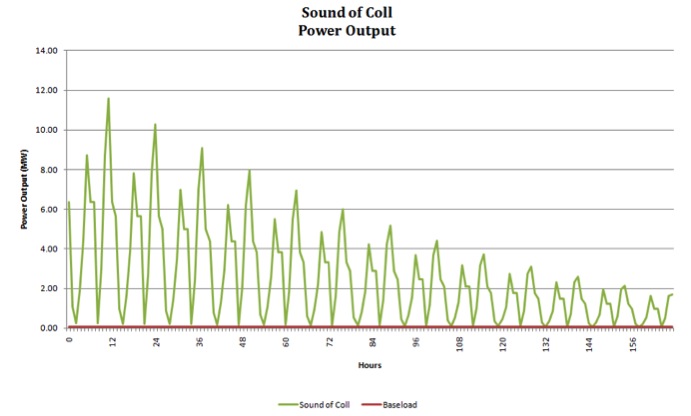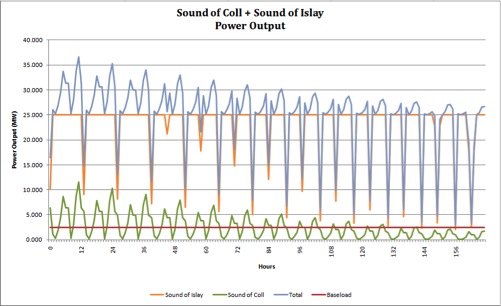- Introduction
- Tidal Energy
- Resource
- Constraints
- Phasing
- Economic Analysis
- Conclusions
- Downloads
Tidal Phasing
Concept
What is Phasing?
Tidal Power is unique amongst renewable source technologies as it is entirely predictable due to being governed by the gravitational pull of the moon and sun on the earth. This level of predictability allows us to calculate the height, time, velocity and direction of a tide anywhere in the world on any given day. This allows us to gain a very accurate prediction of how much energy could be extracted from the tides at any time of the year.
Phasing is the process of selecting multiple tidal sites in order to increase the guaranteed baseload power output from the tidal array. The example below shows the power output for a spring tidal week at al site in the Sound of Coll in Scotland, the green line is the power output from the array and the red line is the baseload power output.

The next example shows a secondary tidal site at the Sound of Islay being phased in. As you can see the baseload power output has significantly increased. By choosing sites with an appropriate difference in phase the baseload power output from the sites can be increased even further. Any power above the baseload is described as firm power and is still useful due to its predictable nature.

If tidal sites were considered on an individual basis they could only make a small contribution to the UK baseload electricity demand. If the same sites were combined through phasing the baseload power output would increased and they could make a noticeable contribution to the UK electircity demand.